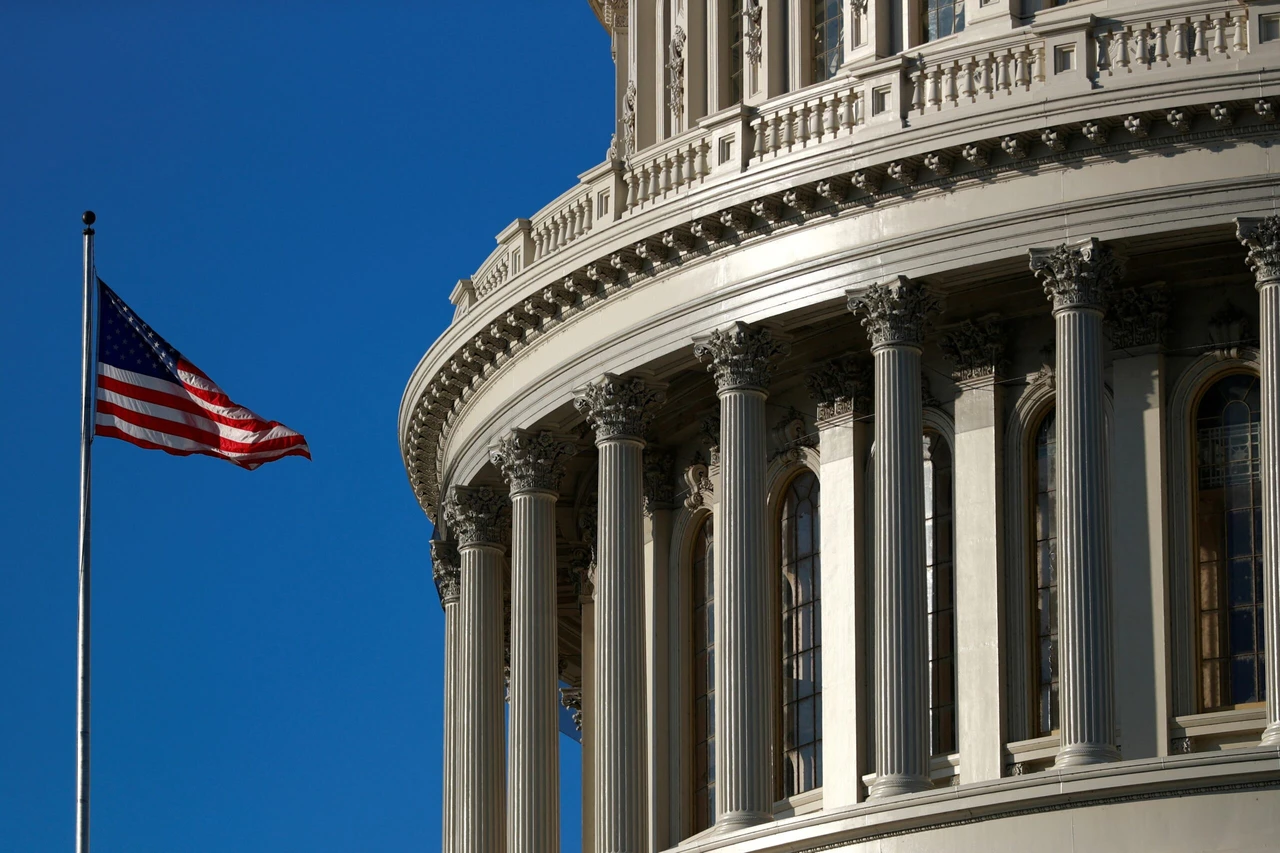US federal budget deficit to climb to $1.9 trillion in 2024, CBO finds
 An American flag flies outside of the U.S. Capitol dome in Washington, U.S., January 15, 2020. (Reuters)
An American flag flies outside of the U.S. Capitol dome in Washington, U.S., January 15, 2020. (Reuters)
The United States federal budget deficit is projected to reach $1.9 trillion for the fiscal year 2024, according to a report released Tuesday by the Congressional Budget Office (CBO). This figure marks a significant increase of $0.4 trillion, or 27%, from the CBO’s previous estimate in February.
In a statement, the CBO highlighted that “adjusted to exclude the effects of shifts in the timing of certain payments, the deficit amounts to $2.0 trillion in 2024, equal to 7.0 percent of gross domestic product (GDP), and $2.8 trillion in 2034, or 6.9 percent of GDP.”
The report underscores the escalating nature of the federal deficit, noting that “deficits from 2024 to 2034, which total $24 trillion, are about 70 percent larger than their historical average over the past 50 years when measured in relation to economic output.”
Federal spending is expected to rise to $6.8 trillion, or 23.9% of GDP, in 2024, with projections indicating it will reach 24.9% of GDP by 2034. This increase is attributed to growth in interest costs and higher expenditures on programs benefiting older Americans, including Medicare and Social Security.
Conversely, federal revenues are anticipated to total $4.9 trillion, or 17.2% of GDP, in 2024, with an expected rise to 18% of GDP by 2027, according to the CBO.
The CBO also provided insights on inflation and interest rates, noting that inflation, measured by the price index for personal consumption expenditures, is expected to decline from 2.7% in 2024 to approximately 2% by 2026, aligning with the Federal Reserve’s long-term target.
Additionally, the CBO projects that the Federal Reserve’s benchmark interest rate will decrease in the first quarter of 2025.
This report comes at a crucial time as policymakers grapple with the implications of a growing deficit and its potential impact on the economy. The sharp increase in the deficit underscores the ongoing challenges in balancing federal spending and revenues, particularly in the face of rising costs associated with an aging population and interest payments.



